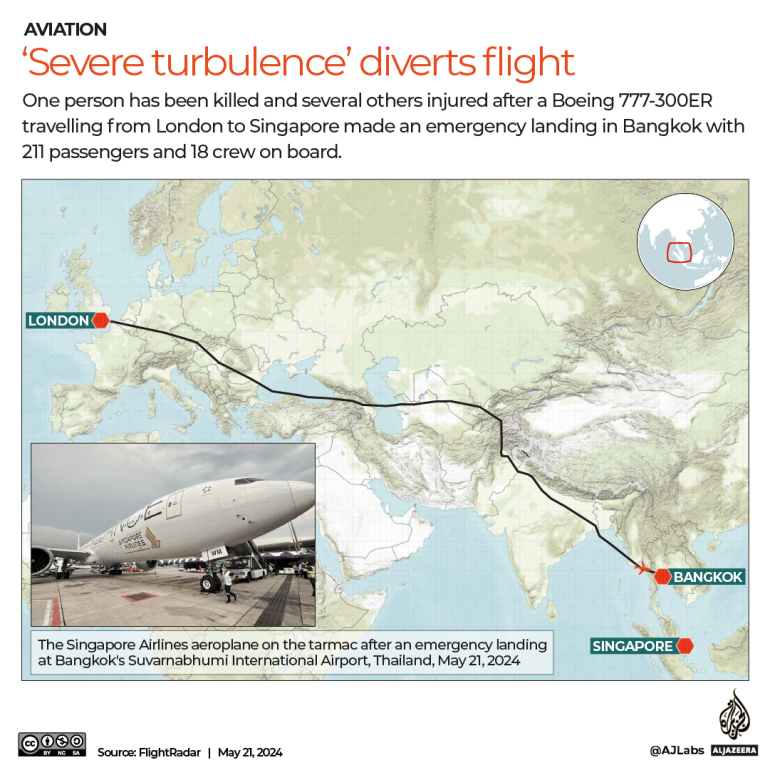Singapore is a small, low-lying and highly urbanised city-state, with limited land and no natural resources. This limits our access to alternative clean energy options. It also makes us particularly vulnerable to the effects of climate change.
We are already experiencing some of the impacts of climate change such as more intense rainfall and prolonged dry spells. By 2100, we could experience mean sea level rise of up to 1 metre, an increase in daily mean temperatures as high as 4.6°C, and more extreme and intense weather events1 , which may lead to more frequent floods. Climate change will threaten our access to essential resources such as water, food and energy. It will also potentially impact our biodiversity and health.
Just like how we have tackled our challenges in the past, we are planning decades ahead, and investing in research and development and innovative solutions to overcome these constraints and challenges. Our efforts to mitigate carbon emissions, along with steps taken to adapt to climate change , aim to ensure that Singapore remains a vibrant and liveable city for current and future generations.
Although we contribute only around 0.11% of global emissions, Singapore continues to play our part to realise ambitious climate actions:
We support a robust global response to climate change
This is through a multilateral rules-based system under the UN Framework Convention on Climate Change.
a. We submitted an ambitious 2030 climate pledge, and are committed to reducing our emissions intensity by 36% from 2005 levels by 2030, and stabilising our emissions with the aim of peaking around 2030.
b. We will build on our 2030 climate pledge and are developing our longterm low emissions development strategy, with a public consultation currently underway.
c. We will also review and update our 2030 climate pledge as part of this exercise.
We adopt forward-looking domestic mitigation measures
a. Pricing carbon. Singapore is the first in Southeast Asia to introduce an economy-wide carbon tax at S$5/tonne CO2e, with no exemptions. This rate will be reviewed by 2023, with the intention to increase it to between S$10 and S$15/tonne CO2e by 2030.
b. Early Fuel Switch. Singapore has taken early steps since the early 2000s to use a cleaner fuel mix. Currently, 95% of our electricity is generated from natural gas.
c. Improving our industry energy efficiency. The Energy Conservation Act has put in place enhanced requirements for large industrial energy users to measure and evaluate their energy performance. We are targeting for the industry to achieve an energy efficiency improvement rate of 1 to 2% per annum – a rate achieved by leading countries such as Belgium and the Netherlands over the past 10 years. To assist companies transit to a low-carbon economy, we will use revenue from our carbon tax to provide grants and incentives to help businesses reduce their emissions and become more energy and carbon efficient.
d. Intensifying the harnessing of solar power through innovative modes such as floating solar farms. We aim to reach 350 megawatt-peak (MWp) by 2020 and 1 gigawatt-peak (GWp) beyond 2020.
e. Greening our transport. We are working towards 9 in 10 of all peak period journeys to be made on “walk, cycle and ride” transport modes, where “ride” refers to public and shared transport, by 2040. We are also developing the infrastructure for more electric cars, buses and taxis. We are committed to having 100% cleaner energy public bus fleets (e.g. electric or hybrid) by 2040. Our taxi companies have also committed to 100% cleaner energy vehicles by 2040.
f. Greening our buildings. We are on track to having at least 80% of our buildings (by floor area) achieve Green buildings standards by 2030. We will develop new standards to promote super-low energy, zero-energy, and positive energy buildings to push the boundaries for energy efficiency for buildings in Singapore.
g. Reducing waste. We are working with partners in the public, private and people sectors to move Singapore towards more sustainable production and consumption. This will include the adoption of a circular economy approach to reuse our resources for as long as possible. This will reduce our environmental footprint and strengthen our resource resilience.
We take a forward-looking approach in climate adaptation
a. Protecting our coasts. Since 2011, we have raised minimum reclamation levels for newly reclaimed lands to at least four metres above the mean sea level. We have raised the minimum platform levels for new developments and are building critical future developments such as the Changi Airport Terminal 5 and Tuas Terminal mega port at higher platform levels. We are also making plans for coastal defences to better protect our coastal areas as a whole, such as sea walls or pumping stations. These are major investments that we intend to make, to safeguard our future as the effects of sea level rise are felt in the coming decades.
b. Enhancing flood resilience. We have spent around S$1.8 billion on drainage improvement works since 2011. An additional S$400 million will be spent over the next two years to upgrade and maintain drains.
c. Strengthening our resource resilience and security. We have invested in research and development, water infrastructures, and diversified Singapore’s water supply to include weather-resilient sources such as NEWater and desalinated water. To make our food supply more resilient, we are pursuing three strategies, also known as our three “food baskets”:
1) Diversify import sources;
2) Grow local; and
3) Grow overseas.
By 2030, we plan to meet 30% of our nutritional needs with food produced in Singapore.
d. Investing in research to guide adaptation planning. The Centre for Climate Research Singapore will launch a S$10 million National Sea Level Research Programme over the next five years to develop more robust projections of sea level rise. A new Climate Science Research Programme Office will also be set up to formulate, lead and drive efforts to build up climate science capabilities in Singapore.
We invest heavily in research, development, and demonstration (RD&D)
To address our climate and sustainability challenges, and to create solutions that can be exported globally.
a. The National Research Foundation’s Research Innovation and Enterprise (RIE) 2020 Plan has committed S$900 million towards RD&D in the Urban Solutions and Sustainability domain to tackle Singapore’s energy, water, land, and liveability challenges.
b. Building Singapore’s ecosystem of research institutes. We have established collaborations with leading international research and innovation centres to tap on the world’s top expertise, such as the international research and innovation hubs housed in the Campus for Research and Technological Enterprise. Many of these centres focus on energy-related research, including the Cambridge Centre for Carbon Reduction in Chemical Technology, Shanghai Jiao Tong UniversityNational University of Singapore Research Centre on Energy and Environmental Sustainability Solutions for MegaCities.
c. Low-carbon technologies are being developed and test-bedded in Singapore to help us address our own energy and climate challenges, while also being useful to other cities facing similar challenges. In February 2019, the Solar Energy Research Institute of Singapore (SERIS) announced that it is partnering China’s Guangzhou Ruxing Technology Development Company Ltd to develop technologies to enable production of high-efficiency (>24%) low-cost solar cells. In May 2019, EMA launched partnerships with PSA and Shell, totalling S$12 million, to develop solutions in energy storage and digitalisation.
d. Singapore is developing the Tuas Nexus – the integration of PUB’s Tuas Water Reclamation Plant with Singapore’s National Environment Agency’s Integrated Waste Management Facility. The Tuas Nexus will maximise efficiencies in energy and resources, by employing the latest technologies to harness the synergies of the water-energy-waste nexus from used water and solid waste. A highlight of Tuas Nexus will be its ability to achieve full energy self-sufficiency.
e. The National Environment Agency has also set aside S$45 million under the “Closing the Waste Loop” R&D Initiative to develop technologies and solutions to tackle challenges posed by increasing waste generation, scarcity of resources and land constraints for waste management. Waste-to-resource R&D can help us develop a circular economy approach to move Singapore closer to its vision of becoming a Zero Waste Nation.
We tap on green growth opportunities such as green financing
Which play a crucial role in channelling capital to low-carbon solutions.
a. Mainstreaming sustainable financing practices. In 2015, the Association of Banks in Singapore (ABS) introduced guidelines on responsible financing, which set out minimum standards on responsible financing practices to be integrated into banks’ business models and risk management functions. The Monetary Authority of Singapore (MAS) is currently working closely with the industry to develop guidelines on environmental risk management for financial institutions across the banking, insurance and asset management sectors. Each sector’s guidelines will include MAS’ supervisory expectations on governance, risk analysis and disclosures in relation to environmental risks.
b. Facilitating growth of green finance investments. MAS launched a Green Bond Grant Scheme in June 2017 that aims to level costs associated with issuing a green bond versus that of a conventional bond and to promote the adoption of internationally accepted standards on sustainability. To date, some S$6 billion worth of green bonds has been issued here by local and foreign companies. In 2019, MAS expanded the Green Bond Grant Scheme to include social and sustainability bonds and lowered the minimum issuance size requirement for the scheme, which will allow more qualifying issuers to gain access to the grant. The grant is now renamed as the Sustainable Bond Grant Scheme.
We forge partnerships and support fellow developing countries
a. More than 128,000 officials from fellow developing countries have participated in courses under the Singapore Cooperation Programme since 1992 in key areas such as sustainable development, urban planning, water and transport management.
b. Launched a Climate Action Package in July 2018 to offer capacitybuilding support in areas such as climate science, flood management, and disaster risk reduction.
c. The ASEAN Specialised Meteorological Centre (ASMC), hosted by the Meteorological Service Singapore, is investing S$5 million in a five-year capability development programme to strengthen the region’s efforts in climate projections and adaptation planning.
d. Established the Southeast Asia Disaster Risk Insurance Facility (SEADRIF). With support from Japan, Singapore and the World Bank, the SEADRIF platform will be based in Singapore, with an initial focus of providing a flood risk pool for Laos, Myanmar, and potentially Cambodia.
We actively contribute to global efforts led by international organisations to address emissions.
These efforts include those led by the International Civil Aviation Organization (ICAO) and International Maritime Organization (IMO) to address GHG emissions from international aviation and international shipping on a global basis.
All of us have a part to play in fighting climate change. We can help to reduce our carbon footprint by making climate-friendly choices. Some of the things we can do include:
a. Using appliances which are energy efficient (look for appliances with a higher tick rating), and those which use refrigerants with lower Global Warming Potential
b. Switching to LED lightbulbs
c. Keeping the air-conditioner at a higher temperature (e.g. 25 degrees Celsius)
d. Choosing to walk, cycle or take public transport
e. Practising the “3Rs” – Reduce, Reuse, Recycle.
Singapore will continue to plan for the future, invest in innovation and technology, and prepare ourselves to meet the challenges posed by climate change as well as external developments. Everyone – companies, individuals and Government – has a role to play.









